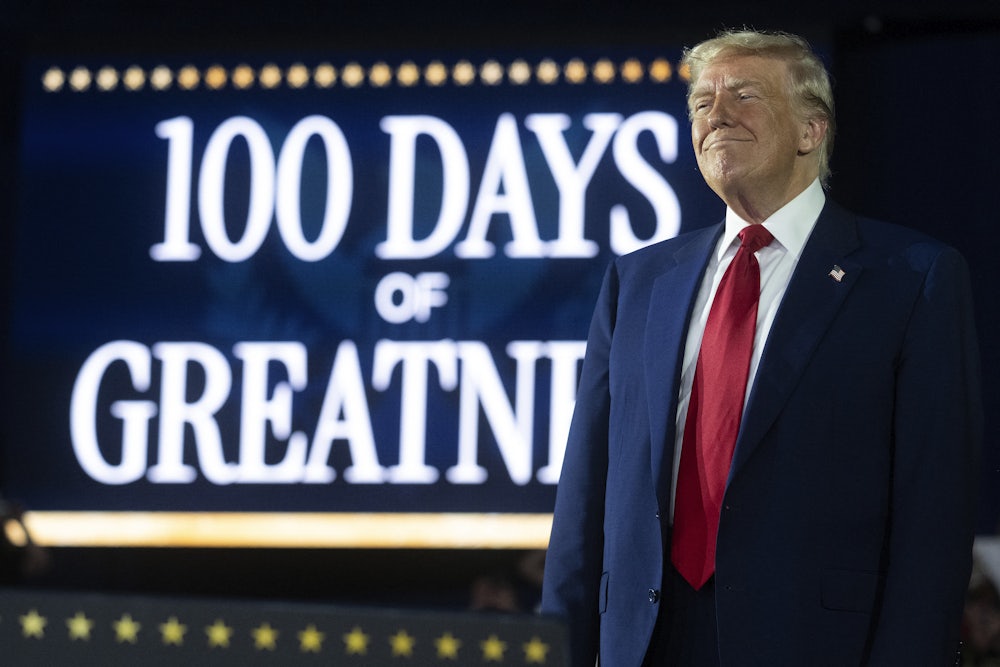It’s not often that an interview perfectly encapsulates a politician’s relationship with reality, but Donald Trump’s recent sit-down with ABC News’s Terry Moran gives us exactly that—a window into Trump’s expectation that the press should simply bend to his version of events, regardless of whether they’re true.
During the interview, Trump repeatedly insisted that Kilmar Abrego Garcia, the man mistakenly deported to El Salvador despite a protective order, had “MS-13” tattooed on his knuckles. When Moran correctly pointed out this wasn’t true, Trump became increasingly agitated.
“On his knuckles—he had MS-13,” Trump insisted.
“He had some tattoos that are interpreted that way,” Moran responded accurately.
Trump doubled down: “It says M-S-one-three.”
When Moran explained that the letters “MS-13” were digitally added to the images Trump was referencing, the former president lost his cool. In perhaps the most revealing moment of the exchange, Trump literally demanded that Moran abandon journalistic integrity and just lie: “Why don’t you just say, ‘Yes, he does,’ and, you know, go on to something else?”
That single line tells us everything we need to know about how Trump views the press’s role: not to report facts or challenge lies but to simply affirm whatever narrative he’s pushing.
The truth about Abrego Garcia’s tattoos is clear. Multiple gang experts have examined the images and explained that while Abrego Garcia does have tattoos on his fingers (a leaf, smiley face, cross, and skull), these are not MS-13 gang markings. The image Trump keeps referencing has digitally added labels suggesting these common symbols represent “M,” “S,” “1,” and “3”—an interpretation experts have dismissed as baseless.
This isn’t just about tattoos. The entire justification for leaving Abrego Garcia in a Salvadoran prison hinges on painting him as a dangerous gang member—a claim built on incredibly shaky evidence. And when confronted with facts that contradict this narrative, Trump doesn’t adjust his position; he demands the reporter change reality to match his claims.
If this seems familiar, it should. Trump has spent years conditioning his supporters to distrust any information that contradicts him while simultaneously demanding that media outlets simply parrot his version of events. It’s the same playbook dictators have used throughout history: Control the information landscape by making the truth whatever you say it is.
The interview also revealed Trump’s admission that he could easily secure Abrego Garcia’s return with a simple phone call to El Salvador’s president—directly contradicting his administration’s claims that they can’t intervene due to Salvadoran sovereignty. When Moran pointed out Trump could “pick up [the phone] and with all the power of the presidency” get him released, Trump admitted, “I could.”
This is more than just an academic debate about some guy’s tattoos. It’s about whether our institutions—including the press—maintain their independence and commitment to facts or whether they’ll be browbeaten into submission by a president who literally tells reporters to “just say yes” when he makes false claims.
The moment highlighted the exact challenge journalists face when interviewing Trump. Do they push back and risk his angry tirades? Or do they “just say yes” and move on to keep the interview going? Moran, to his partial credit, tried to hold the line, though he eventually had to retreat with an “agree to disagree” just to move the conversation forward.
This is ultimately what Trump wants—a media that either actively promotes his falsehoods or is too intimidated to challenge them. Just say yes, stop asking questions, and we can all move on.
But we can’t move on, because the stakes here aren’t just journalistic integrity; they’re democracy itself. When a president demands that reality conform to his statements rather than the other way around, we’re no longer in the realm of politics as usual. We’re in the realm of authoritarianism, where truth is whatever the leader says it is.
And for anyone paying attention, that should be terrifying.










